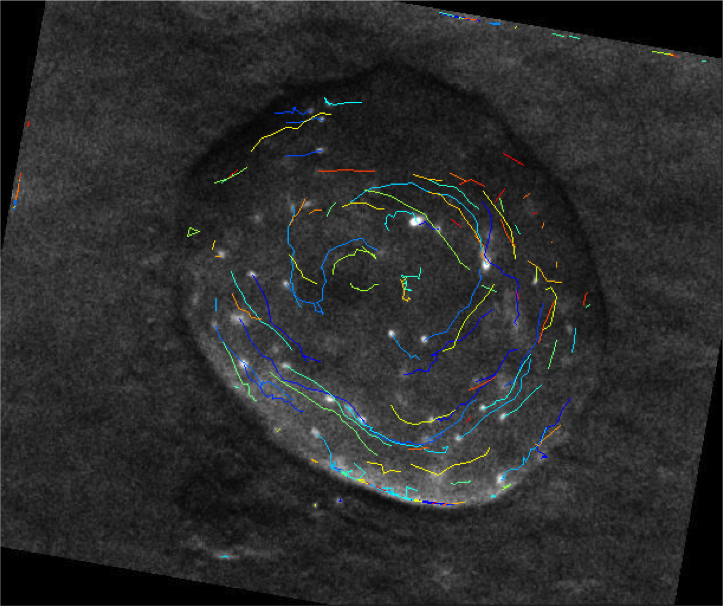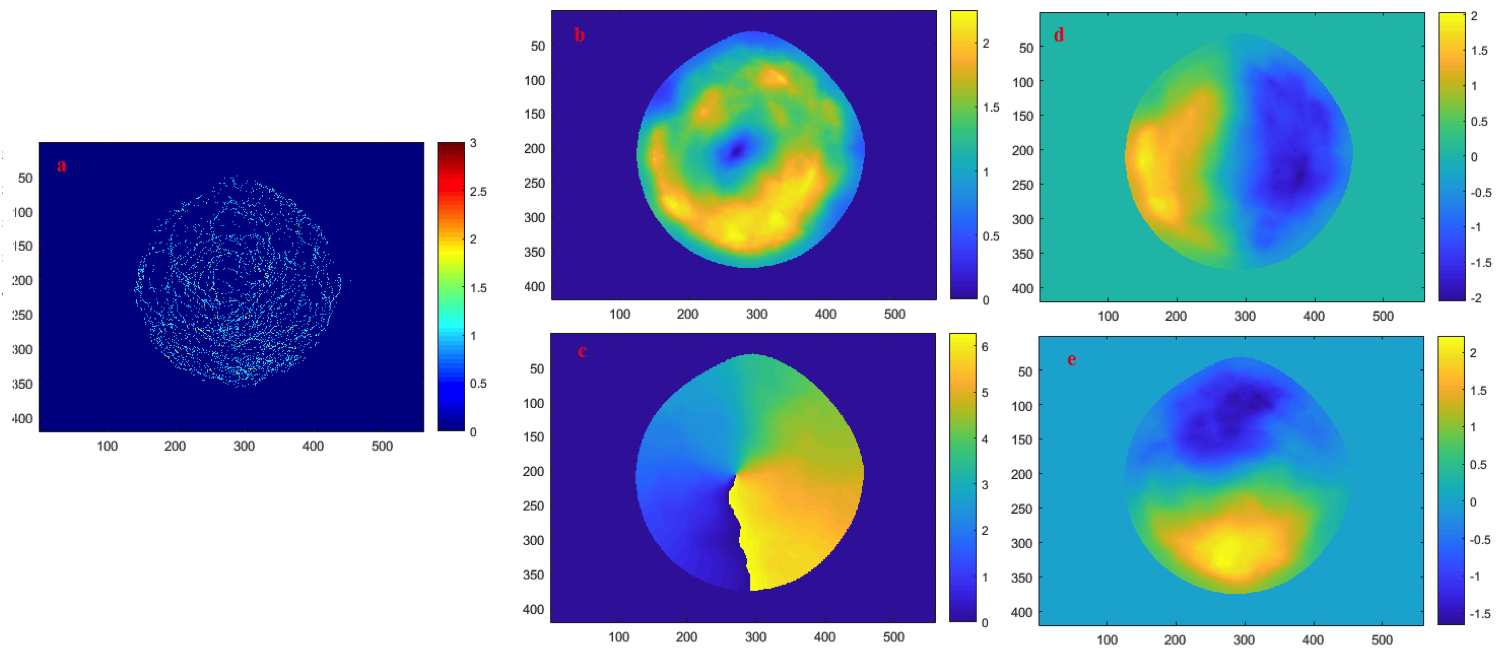Section: New Results
Vesicles tracking
Participants : Raphael Pages, Xavier Descombes.
This work is a collaboration with P. Juan, M. Furthauer from iBV. It was partially supported by the UCA Jedi Idex.
We take advantage of the optical transparency of the zebrafish to study the formation, transport and function of extracellular vesicles in vivo. In the zebrafish Left/Right Organizer (LRO) a cilia-driven fluid flow promotes the directional transport of extracellular vesicles in the organ lumen. We have developed a software to analyze the vesicles trajectory. Assuming that the speed is slow enough, the detection is performed by considering the 2D+t time sequence of data as a 3D volume in which the vesicle trajectories are represented by tubular shapes. We first remove the background in each slice by subtracting a temporal mean computed on a sliding window. The trajectories are than enhanced by a Frangi filter followed by a top hat operator. Finally, the trajectories are obtained by a threshold and filtered to remove those corresponding to cilia movement. To compare different populations we then compute a mean shape of the LRO using an elastic shape metric. The trajectories detected on the different samples of a given population are then projected onto this common space. To have a dense representation of the vesicles speed inside the LRO we then extrapolate the detected trajectories on the whole population using a Markov random field regularization (see figure 8).




